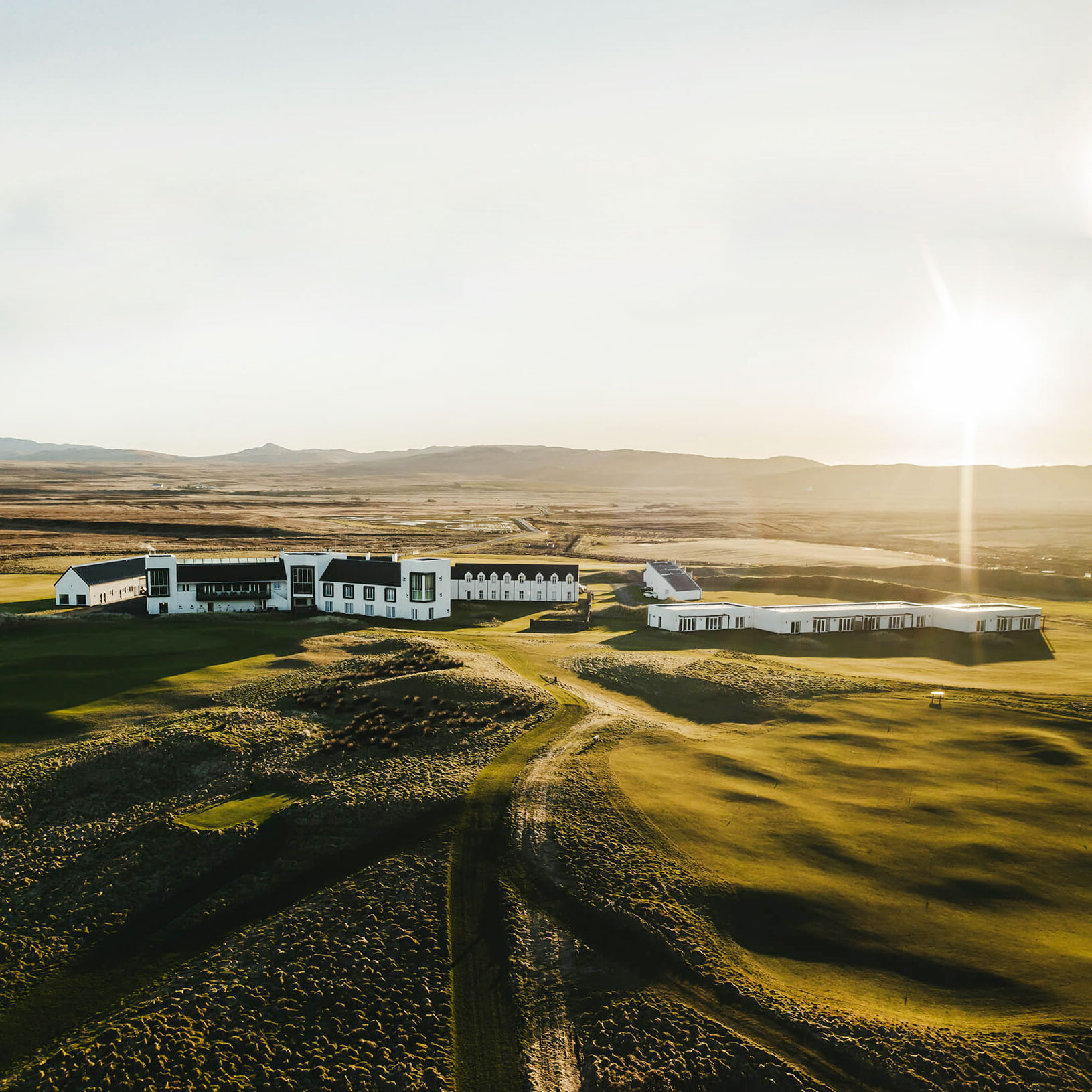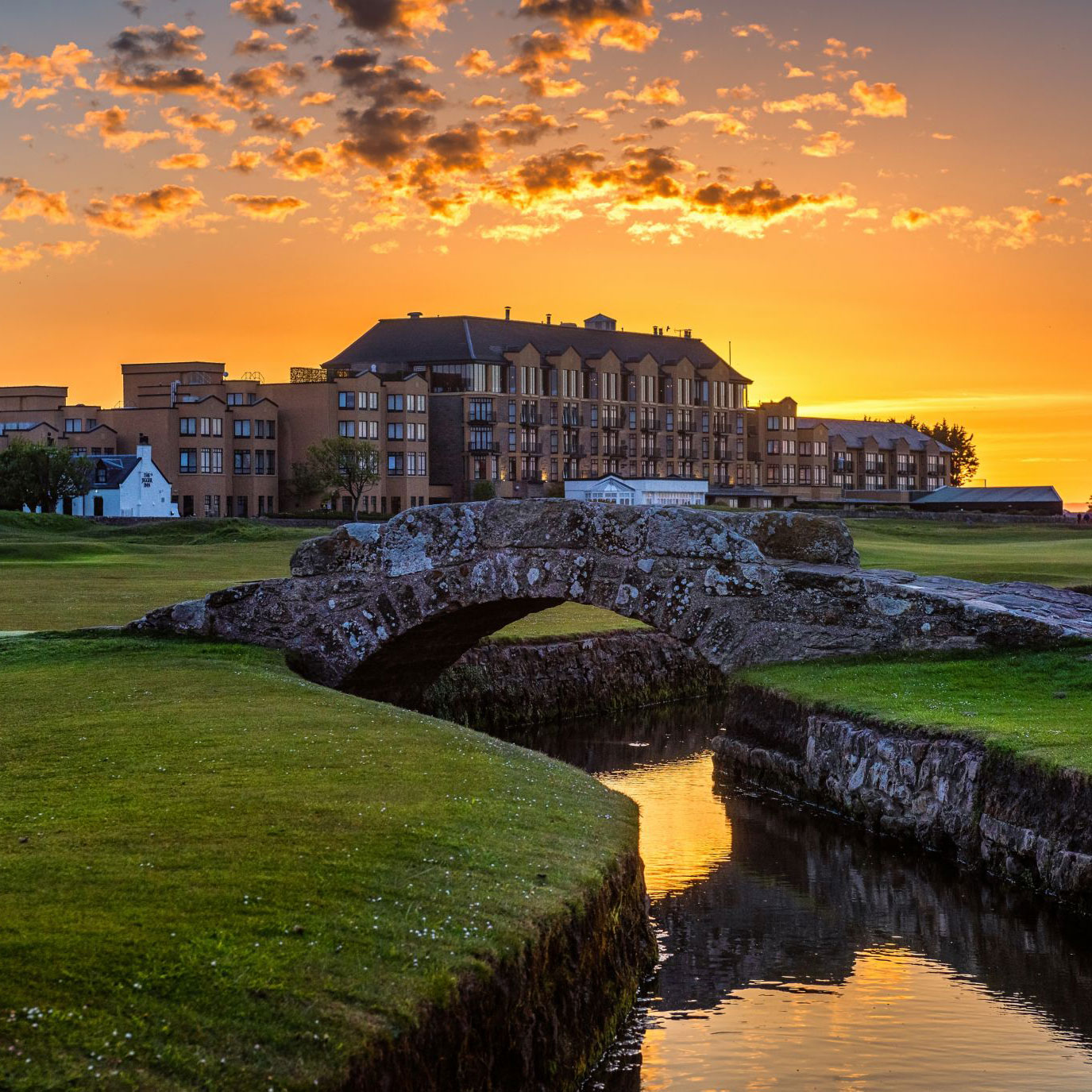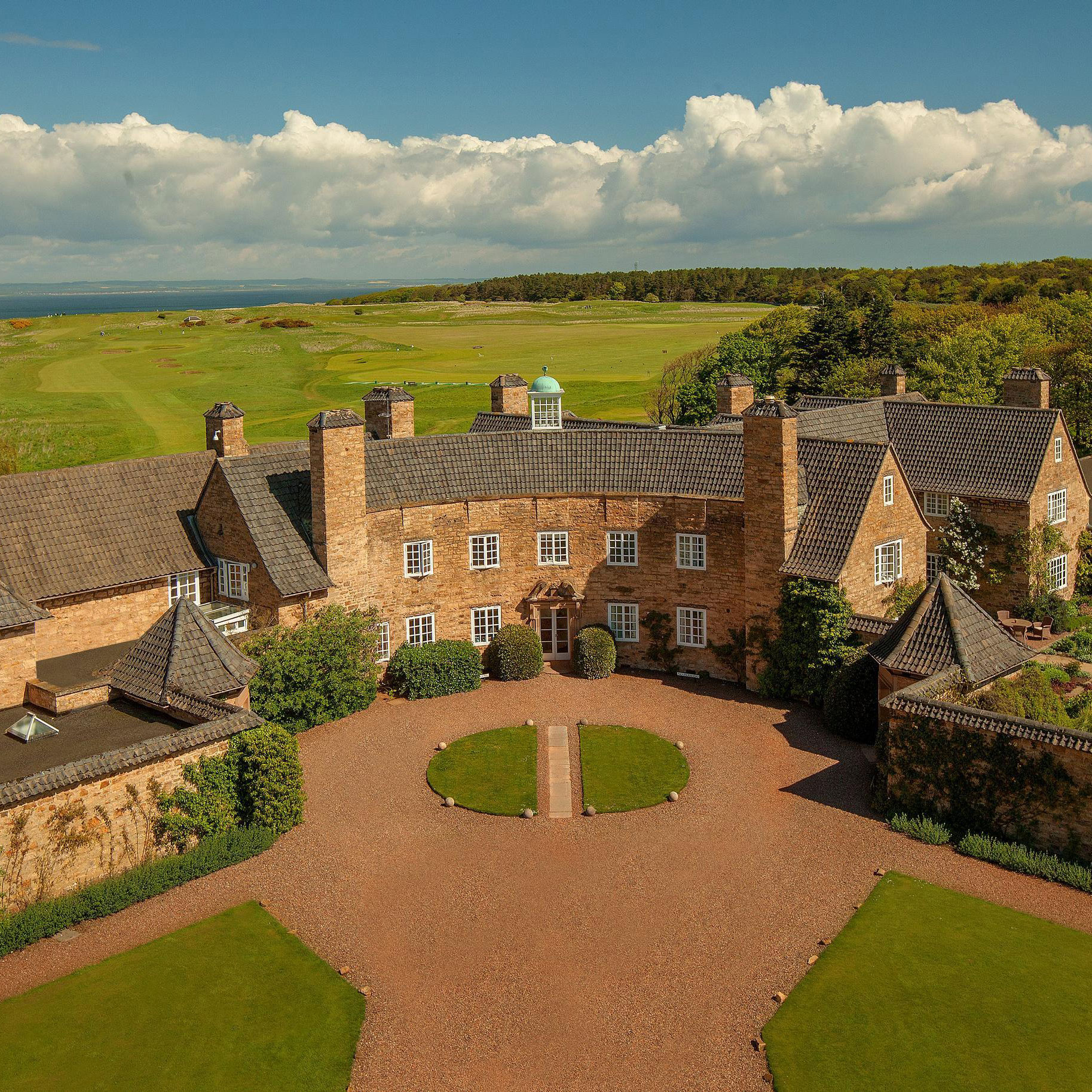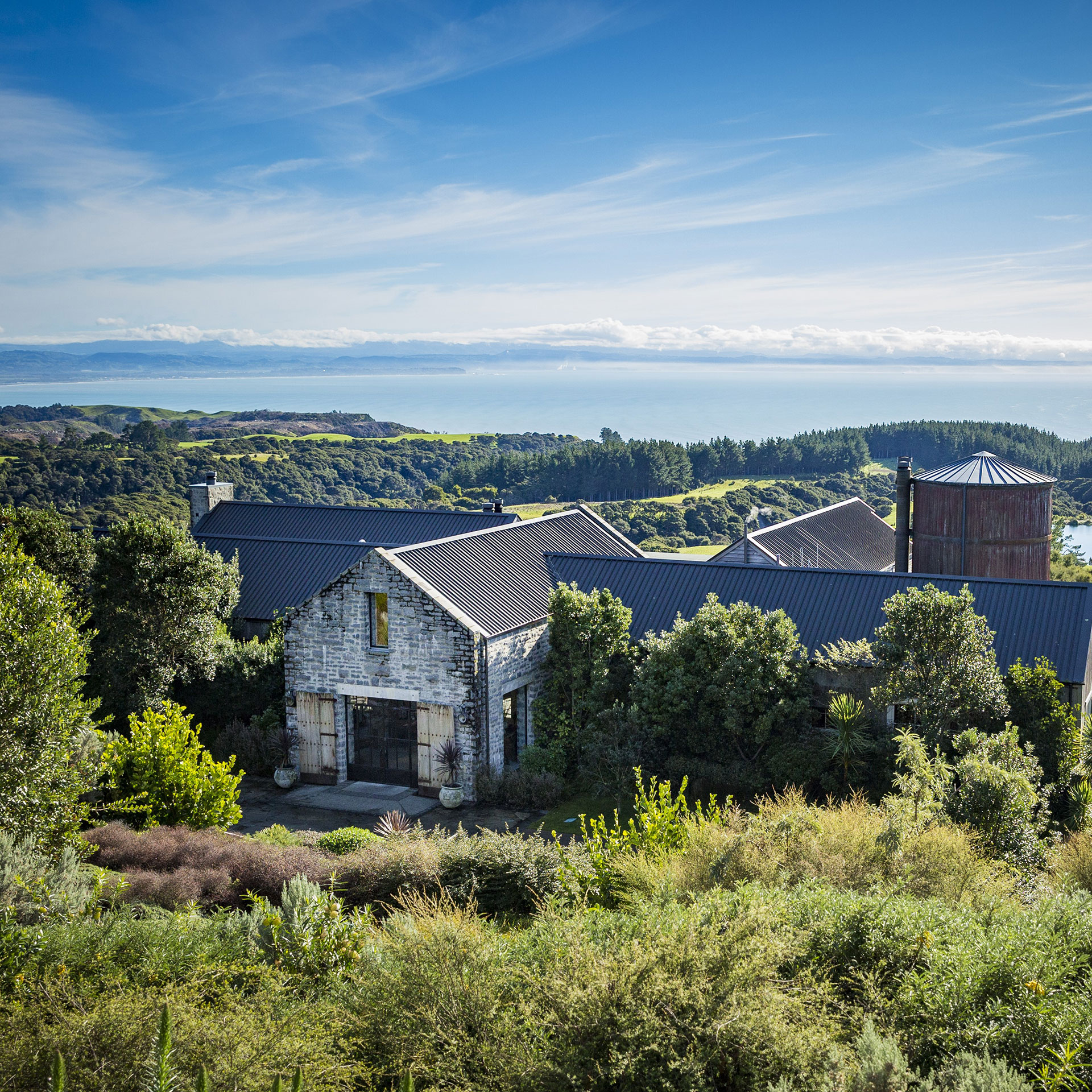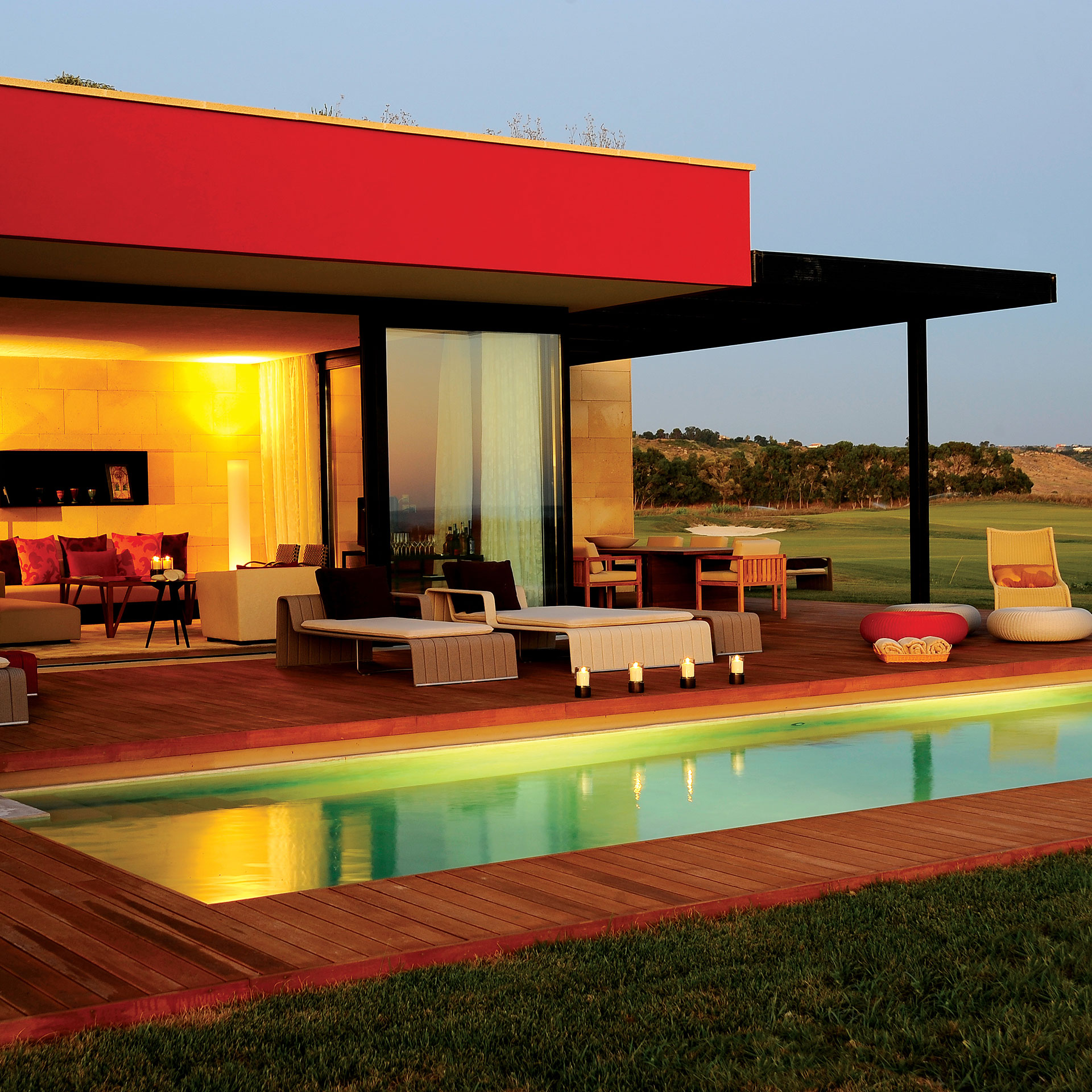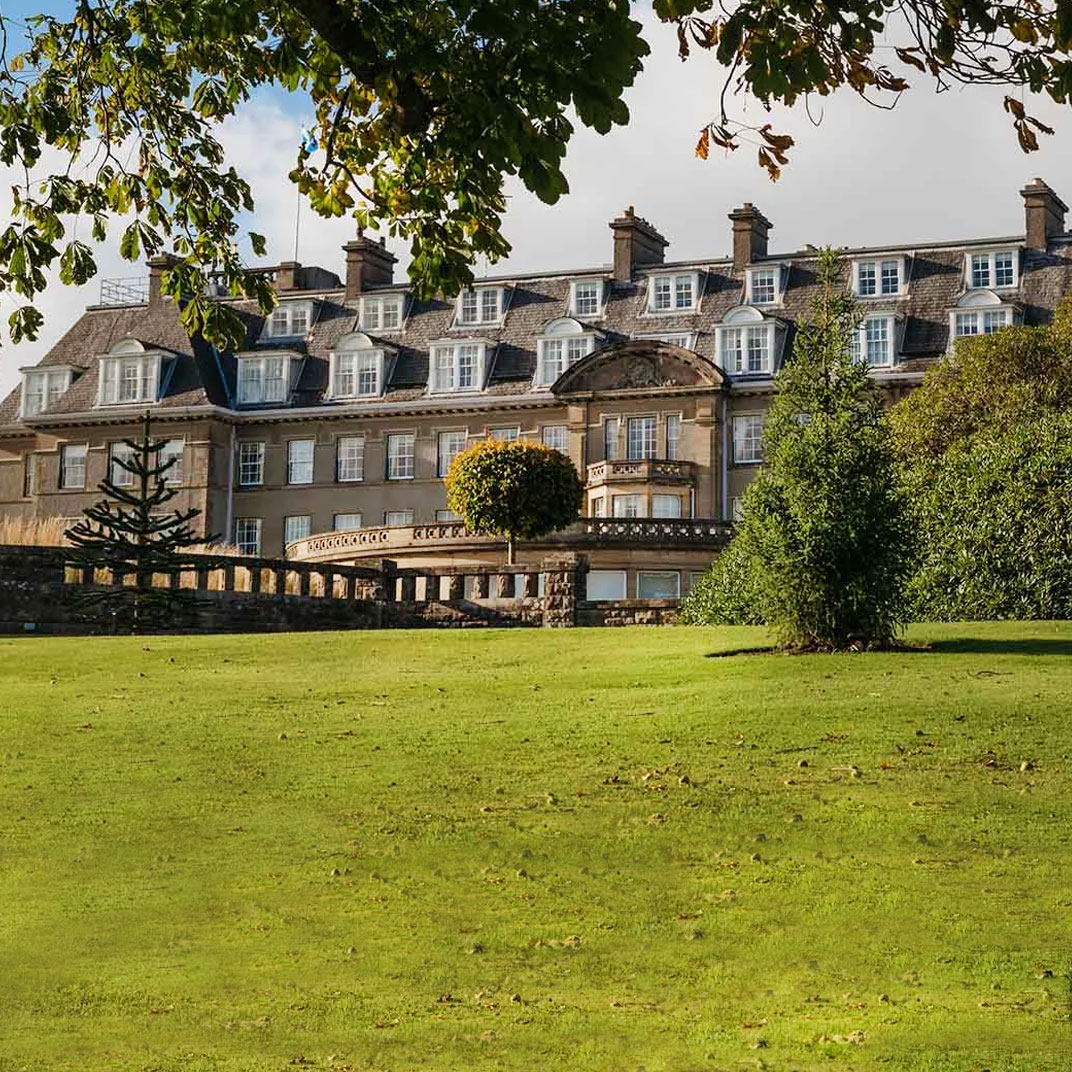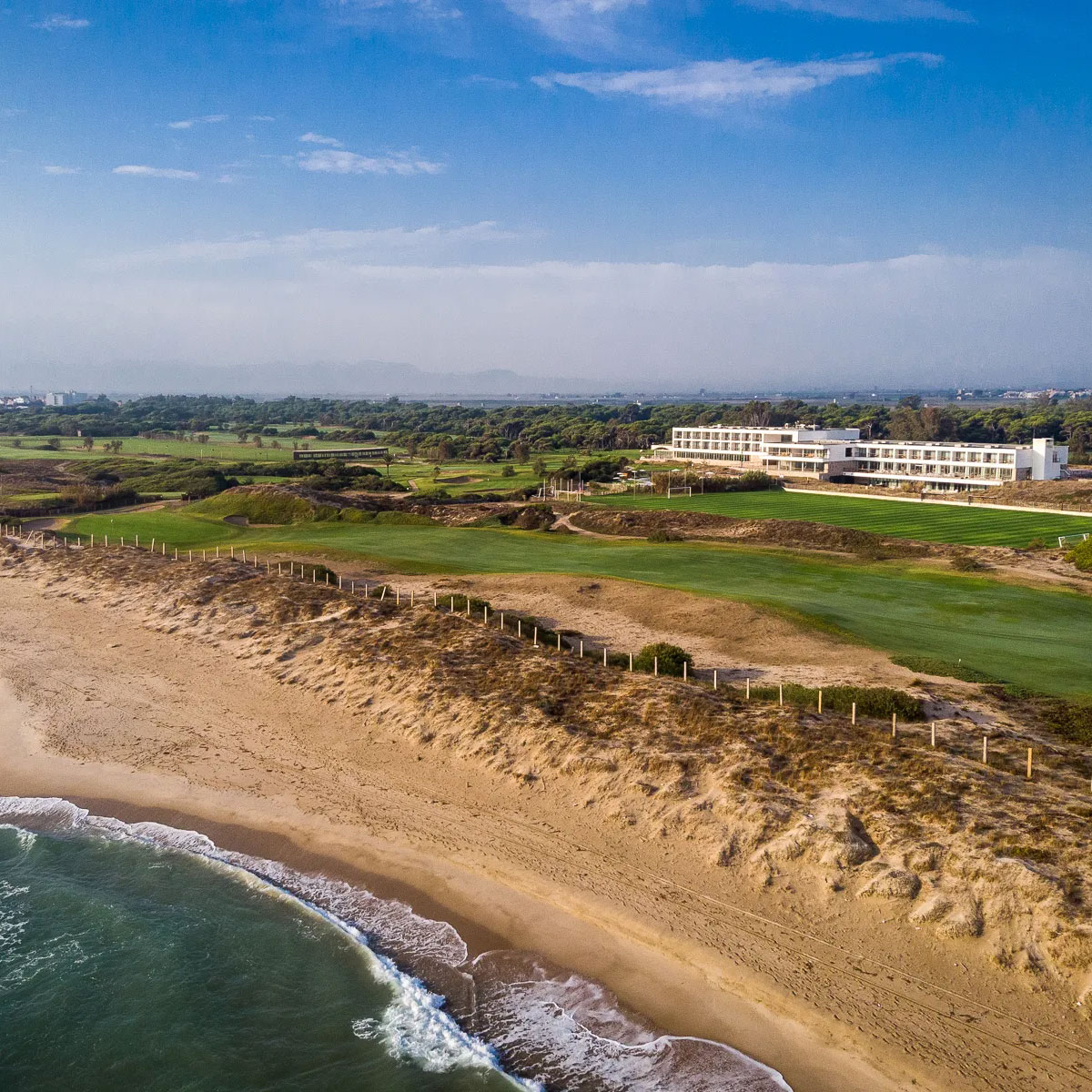
By taking inspiration from its untamed roots, golf has potential to be mentioned alongside sports like — don’t laugh — skiing and surfing. Given its reputation, that might be exactly what it needs. Plus: rugged golf courses with remarkable hotels.
By Mark Fedeli
Marketing and Editorial Director, Tablet Hotels
When I tell people I love golf, I’m careful to explain which version I’m talking about. Because there are a lot of different versions out there, and some of them have a rather poor reputation.
In its early days in Scotland, golf was an adventure — as boundless as skiing, as unpredictable as surfing, as different as you can imagine from how it’s widely perceived today. It was raw and uncomplicated. Imperfect and unpolished. A rugged battle between man and mother nature. There was no refuge from the elements and, in fact, overcoming the elements was very much the point. There’s even a famous Scottish saying: “Nae wind, nae rain, nae golf.”
For centuries, golf courses weren’t really constructed. They were found. Golf holes grew up on land that was the most daunting and exciting to play golf upon. Tucked between civilization and the sea, the great links were crafted by the ages; millennia of sand and surf and wind and rain combining to create a wild landscape of humps, bumps, hummocks, and hollows. The ball bounced and rolled indiscriminately on the rumpled ground, and players had to accept their lack of control over its final resting place.
With no gadgets to gauge distance or heavy machinery to move earth — and no electric carts to ferry them gently to and fro — golf’s original contestants were forced to embrace boldness, bother, and uncertainty.
A 30-foot high dune? Let’s hit over it!
Not able to see where your ball landed? No problem, that’s part of the charm.
No fair? There’s no such thing.
Nature has no sympathy, and neither did golf. Beating your opponent was the goal, and the courses were chaos agents in that pursuit. Bad breaks and random results were an accepted part of the game. No shot “deserved” any particular outcome, no matter how well-struck.

Lucky for us, this more untamed version of golf actually still exists, and its peculiarities are making a comeback. Many of those old courses are still around (and still don’t have carts). Many newer courses adopt the same principles. And many who play the game still play it with the same uncluttered, organic spirit. But unless you’re from the UK or Ireland, it’s probably not the version of golf you’re most familiar with. And it’s rarely the one being promoted on your television every weekend.
This other version of golf presents itself as a sport for those who are trying to avoid all the discomfort of playing a sport. It’s been stripped of its edge and had its quirkiness sanded away. It’s been bogged down with an over-reliance on accessory and technological assistance. It’s divorced itself from community, and prioritized the emotions of the individual. It’s been made an ornament to other endeavors like binge drinking, status seeking, and real estate development. And that wild randomness described above — that’s been chased off, replaced by an obsession with perfection and predictability.
For the past couple of decades, though, golf’s tide has been turning back toward its roots, away from wasteful over-conditioning and needless frivolity. A growing number of players are demanding courses that lie easy on the land and experiences that are less inward-looking, and more in commune with the surrounding environment. They’re demanding a version of the game that’s accessible, sustainable, natural, imperfect. A version that’s basically the opposite of its reputation.
During the pandemic, golf experienced a surge in popularity due almost entirely to its playing fields: vast, uncrowded, outdoor spaces. There were scores of new participants, mostly younger. With concerns about sanitation and social distancing, golf courses had to make adjustments when they reopened in 2020. For many, gone were the electric carts and the bunker rakes and much of the attendant frippery that can clutter the game. It was a welcome return to simplicity.

As someone who writes about hotels for a living, it’s a bit ironic for me to be waxing poetic about golf being less accommodating. Resort golf especially tends to value comfort and convenience (and a fair bit of contrivance). But as much as it pains me to admit it, one of the beauties of golf is that there are versions of it for everyone: young or old, healthy or hobbled, serious or casual. It’s a pastime for a lifetime. You can play it in the manner I’ve championed, or you can plop your butt down in a golf cart with a bag full of appliances and a bucket of ultra-light beer.
I just wish the latter was the exception and not the expectation.
Golf has the potential to be an activity celebrated for its consciousness and its connection to the land. It can rediscover its spirit of adventure and its inherent respect for nature. Like skiing and surfing, it can be liberating and intrepid and even fashionable. Golf might never be listed equally alongside those sports, but it doesn’t have to be so far out of the conversation.
All the elements are there, even if the human one needs a little work. ▪
Great Hotels at Great Golf Courses
Golf courses are one of the world’s most popular hotel amenities, so it’s only natural that plenty of the accommodations in our selection would cater to golfers in some measure. Below, the cream of the crop; a collection of Tablet hotels that are connected to some of my favorite golf courses, from major championship venues to luxury resorts to unforgettable ancient links that lie far off the beaten path. The common denominator: wild at heart. No surprise that so many of them are in Scotland.
Machrie Hotel & Golf Links
Port Ellen, Scotland
Golf purists will recognize the appeal of a trip to Islay rests not on a hotel, but on the Machrie Links, a fabled Willie Campbell course that dates back to 1891, and is basically the epitome of everything championed above. The Machrie Hotel is hotelier Gordon Campbell Gray’s first in Scotland, and it’s fantastically luxurious but impeccably tasteful about it, and historically aware but never old-fashioned.
Marine North Berwick
North Berwick, Scotland
Known affectionately as the ‘Grand Old Lady’, Marine North Berwick is a beacon of luxury on Scotland’s renowned golf coast that’s been meticulously restored to its original splendor, offering guests a glimpse into its rich past. With its prime position overlooking the Firth of Forth, Bass Rock, and most importantly, the North Berwick West Links, the hotel promises a serene and picturesque retreat in the heart of East Lothian.
Marine Troon
Troon, Scotland
Marine Troon is a great retreat for golf enthusiasts and nature lovers alike, offering unobstructed views of the Isle of Arran and proximity to the prestigious Royal Troon Golf Club, a regular host of The Open Championship. Guests can savor the flavors of Scotland at The Rabbit and The Seal, the hotel’s restaurant and bar, which highlights local suppliers and fare. There’s also a luxurious spa and fitness center, with a pool, sauna, squash, and steam rooms.
Links House at Royal Dornoch
Dornoch, Scotland
Dornoch, an hour to the north of Inverness in the Scottish Highlands, has a bit more going on than just golf, but the Links House at Royal Dornoch makes its priorities plain — the first tee of one of the world’s greatest links is a mere fifty feet from its door. The hotel has just 15 rooms, but it’s got personality for days — the main house, in distinctive Sutherland sandstone, dates back to the 1840s.
Dornoch Station
Dornoch, Scotland
Pulling into Dornoch Station, you’re immediately immersed in the essentials of the Scottish highlands: sandy coastlines, windswept heaths, here and there a castle, and — of particular relevance here — the Royal Dornoch Golf Club. That’s almost definitely what you’re here for, though the genteel aesthetic of Dornoch Station’s grounds and interiors makes it an attraction in its own right.
Old Course Hotel
St. Andrews, Scotland
Presumably it’s only golfers who will be interested in the Old Course Hotel; a few of you may just be mad for the hills of Fife, but most are here to see the birthplace of the game as we know it. The Old Course at St. Andrews is not just any old course, but (arguably) the original course, and the Old Course Hotel stands so close to these ancient links you’re actually encouraged to hit over it on the 17th hole.
Rusacks
St. Andrews, Scotland
For golfers, the appeal of St. Andrews is self-evident, and Rusacks has presided over the 18th hole of the Old Course since the late 19th century. Today it’s still full of antique atmosphere, but it’s been given an update in the areas that needed one: the rooms are still delightfully historical in style, but the comforts are modern, and the restaurants are classic in inspiration but contemporary in execution.
Greywalls Hotel
Gullane, Scotland
Greywalls, a stunning Arts and Crafts–style house built in 1901 by the architect Edwin Lutyens, has a rather famous neighbor: the Muirfield golf links, home to the Honourable Company of Edinburgh Golfers, the world’s oldest club. The hotel is allocated a limited amount of tee times at Muirfield, but it’s also within shouting distance of other estimable links like North Berwick and Gullane.
Slieve Donard
Newcastle, Northern Ireland
With the majestic Mountains of Mourne rising dramatically in the background, Slieve Donard in Newcastle has been an icon for more than 125 years. Following a comprehensive renovation, the lobby and guest rooms have been updated and reimagined to celebrate the hotel’s rich heritage and the stunning natural beauty of the surrounding landscape, which includes the legendary Royal County Down golf course.
Rosewood Cape Kidnappers
Hawke’s Bay, New Zealand
Where else but in New Zealand would you actively seek out a working sheep ranch for a bit of rural high luxury? This particular sheep ranch, and its unbelievably dramatic golf course (designed by visionary architect Tom Doak), lies not on some dull green hillside but on the headlands overlooking Hawke’s Bay — a stunning setting in a country that’s not short on stunning settings.
Verdura Golf & Spa Resort
Sciacca, Italy
If golf isn’t quite the first thing you think of when you think of Sicily, you’re not alone. But thanks to the work of prominent course architect Kyle Phillips, designer of Scotland’s Kingsbarns, it’ll soon seem like the most natural association in the world. There are 45 excellent holes of pure seaside golf at Verdura, all against the beautiful backdrop of Mediterranean Italy’s olive country.
The Gleneagles Hotel
Auchterarder, Scotland
Golf is obviously the big draw at Gleneagles (though non-golfers will love the grand hotel and the warm Scottish hospitality). The King’s Course, which dates back to 1919 and was designed by the legendary James Braid, is the resort’s crown jewel, and perhaps Scotland’s best inland golf courses. There are 45 more holes on the property, including the charming Queen’s course and nine-hole Wee Course.
Parador de El Saler
El Saler, Spain
Set within the Albufera, a national park, on the coast just to the south of the city of Valencia, El Saler is one of continental Europe’s most highly regarded golf courses. And the hotel, it must be said, is an impressive one as well: an imposing modern edifice, stretching out along the coast. Rooms come with vast windows, and many feature balconies that face out to sea.
Budersand Hotel – Golf & Spa
Sylt, Germany
The northernmost of Germany’s islands, Sylt is best known for its vast, sandy beaches. But one of its major attractions lies on the mainland-facing side. Budersand is home to an award-winning golf course, built in links style along the coast — and it’s also home to an impressively luxurious hotel. The crisp, contemporary rooms make the most of the sun and the sea views.

Mark Fedeli is the hotel marketing and editorial director for Tablet and Michelin Guide. He’s been with Tablet since 2006, and he thinks you should subscribe to our newsletter.



